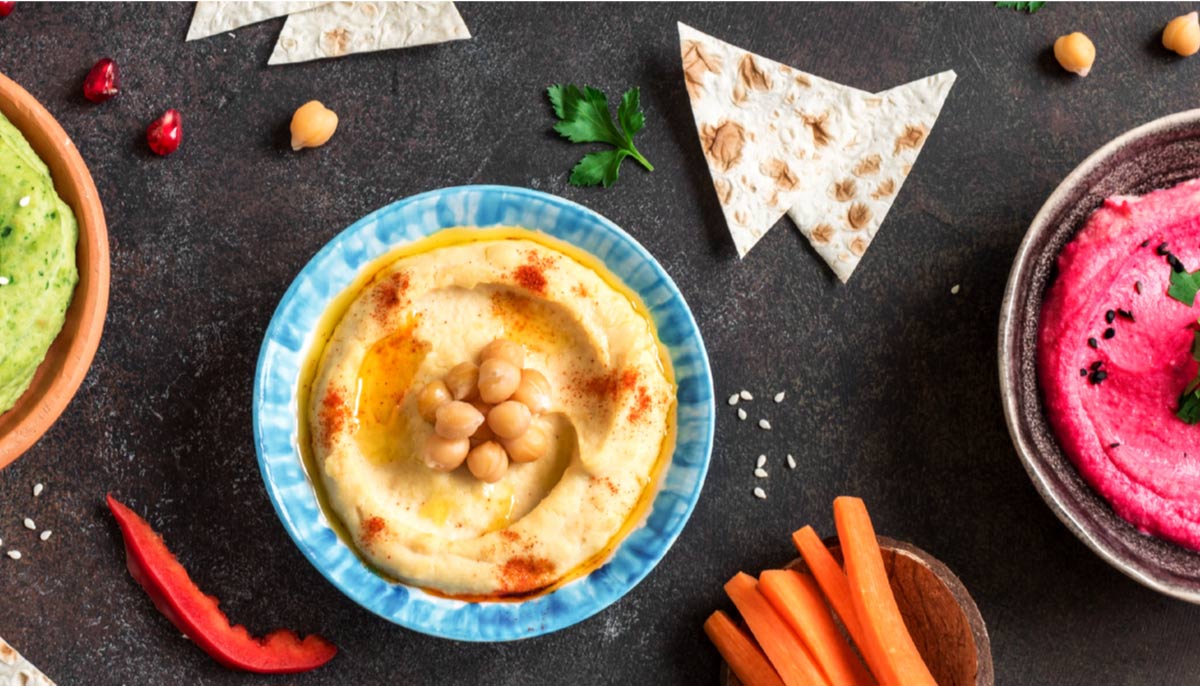Shutterstock
Hummus is not only extremely versatile but also offers a number of health benefits. Although it is a popular Middle Eastern dip and spread, you can add different spices and seasonings to make it taste however you’d like.

Traditional hummus requires only a few ingredients including chickpeas (garbanzo beans), olive oil, lemon juice, and tahini (ground sesame seeds). Using a food processor, you can make a batch of hummus in just minutes and enjoy a healthy snack.
Hummus is packed with nutrients and has been linked to a number of different health and nutritional benefits. A 3.5-ounce serving only has 166 calories and gives you a whopping 7.9 grams of protein, 14.3 grams of carbs, 6 grams of fiber, and between 7 percent to up to 39 percent of your recommended daily intake of manganese, copper, folate, magnesium, phosphorus, iron, zinc, thiamine, vitamin B6, and potassium.
The healthy plant-based protein makes hummus an excellent choice for those who are vegetarian or vegan and is a delicious, healthy snack that everyone can enjoy. Both the virgin olive oil and the sesame seeds are excellent sources of anti-inflammatories.
Hummus is also a great source of fiber, which is important to digestive health and keeping your stools regulated. If made from chickpeas, hummus has a low glycemic index (GI), which means it digests slower resulting in a more balanced rise and fall of blood sugar levels.
Aside from those health benefits, hummus contains ingredients that are important to your heart health and aid in weight management. The best part is, no matter what diet you follow, hummus is naturally gluten-, nut-, and dairy-free. For those who suffer from food allergies or intolerances, hummus is one food you don’t have to worry about!
I absolutely love hummus, but buying it at the store can not only get expensive but also limits the variety of flavors. When you make this dish at home, you can whip up an entire batch for less than two bucks and season it however you’d like!
Start with a can of chickpeas, or change it up and use black beans or beetroot instead. If you use canned beans, drain them and use and reserve the liquid in case you need to thin the hummus out after processing.
Put the juice of one lemon, two tablespoons virgin olive oil, and a quarter-cup of tahini along with a clove of garlic for added flavor in a food processor. Process for about 30 seconds or until smooth.
Next, add the beans and spices to the processor. This is the fun part where you can make your hummus just how you’d like. For traditional hummus, add cumin. I also like to add a touch of salt, but to mix it up I make spicier hummus by adding chili powder or cayenne pepper.
For added flavor, you can use a number of other things as well such as cilantro, hot sauce, spinach or basil. Smoked paprika is another favorite spice I use to blend in or sprinkle on top before serving.
Once you’ve added all of your extras and the beans or beetroot, process again until smooth. If the mixture turns out too thick, simply add some of the juice you reserved from the beans or water until they reach the consistency you want.
Use hummus as a spread, add to salads, or dip veggies, crackers, pretzels, or pita for a delicious snack!